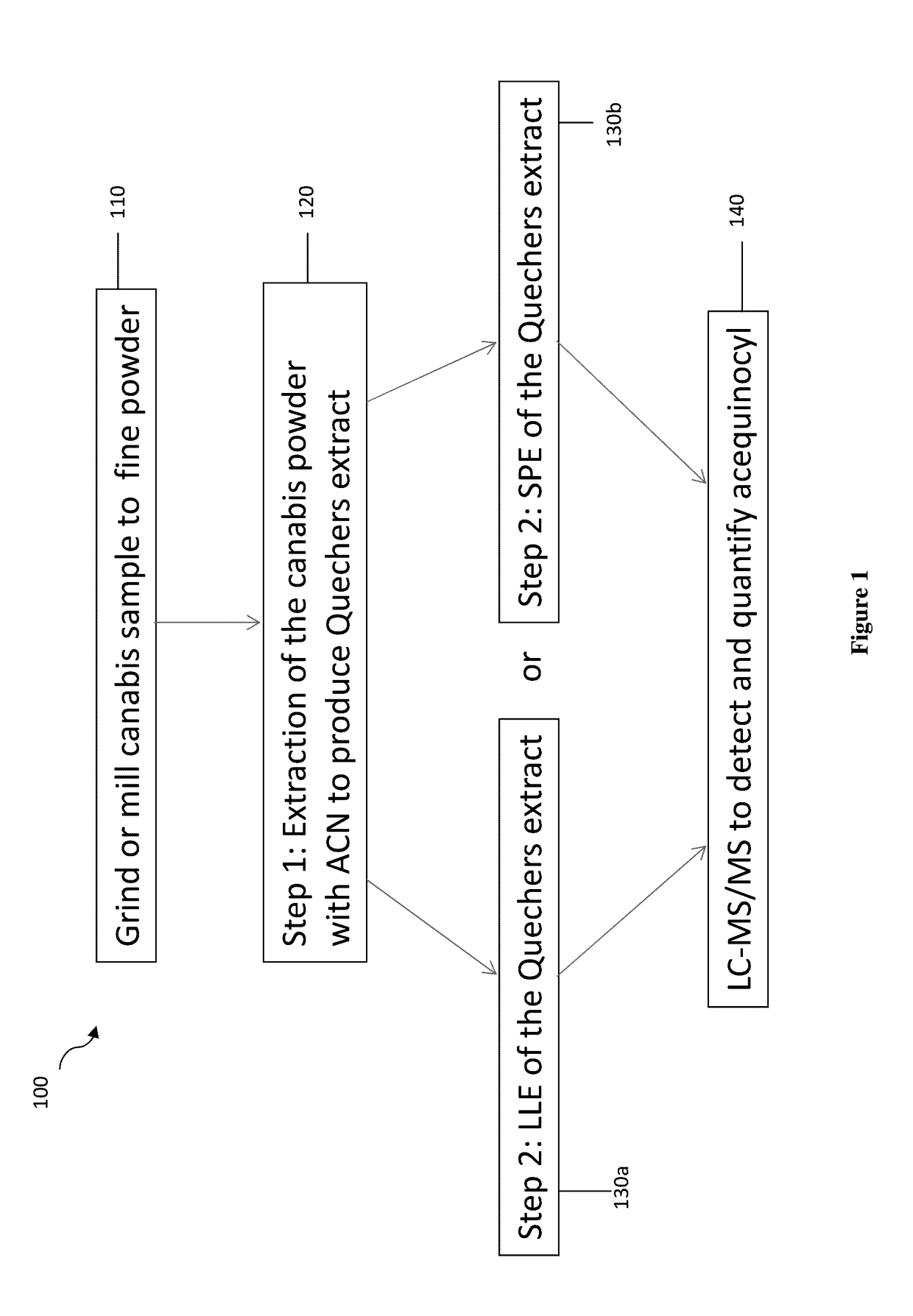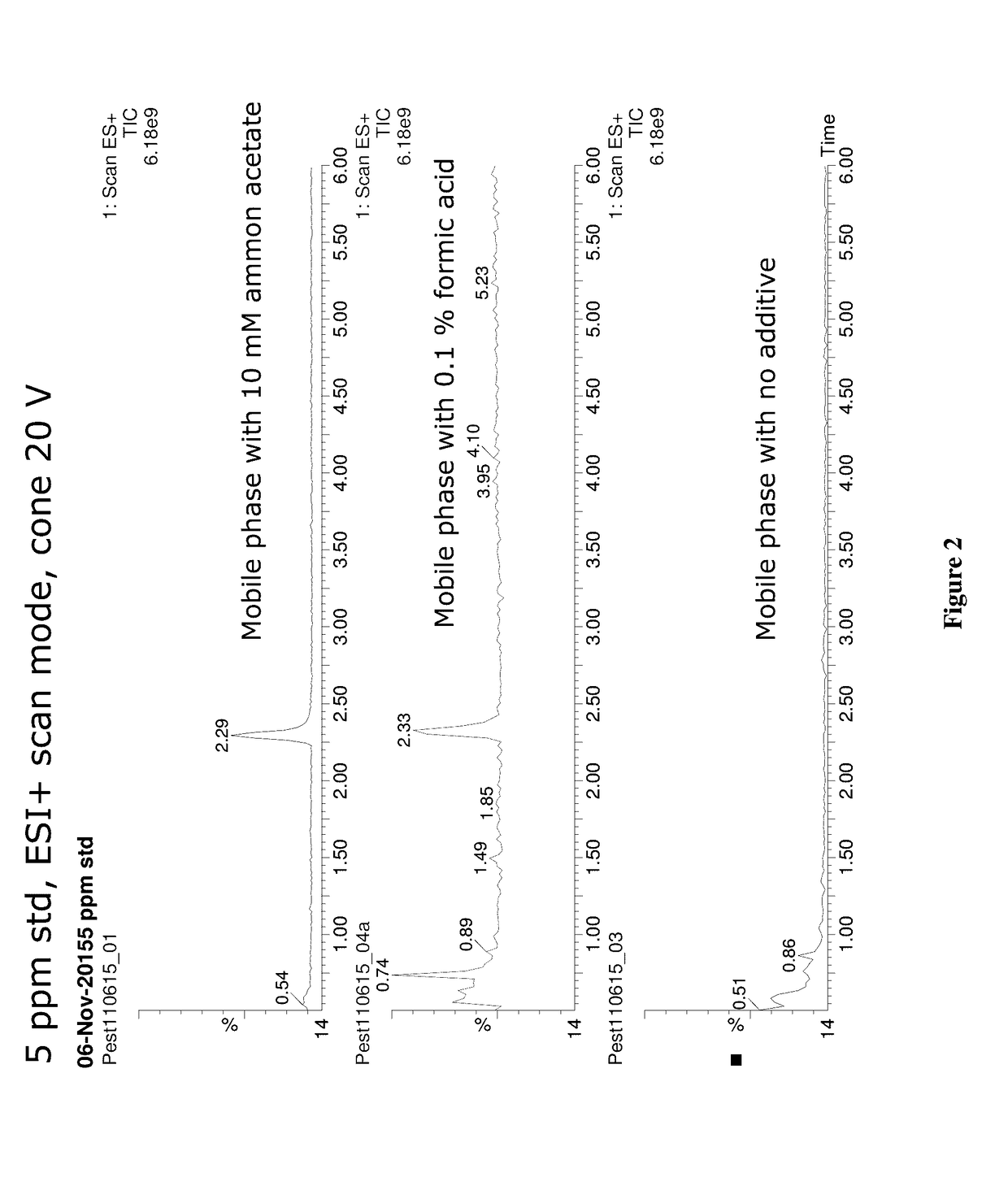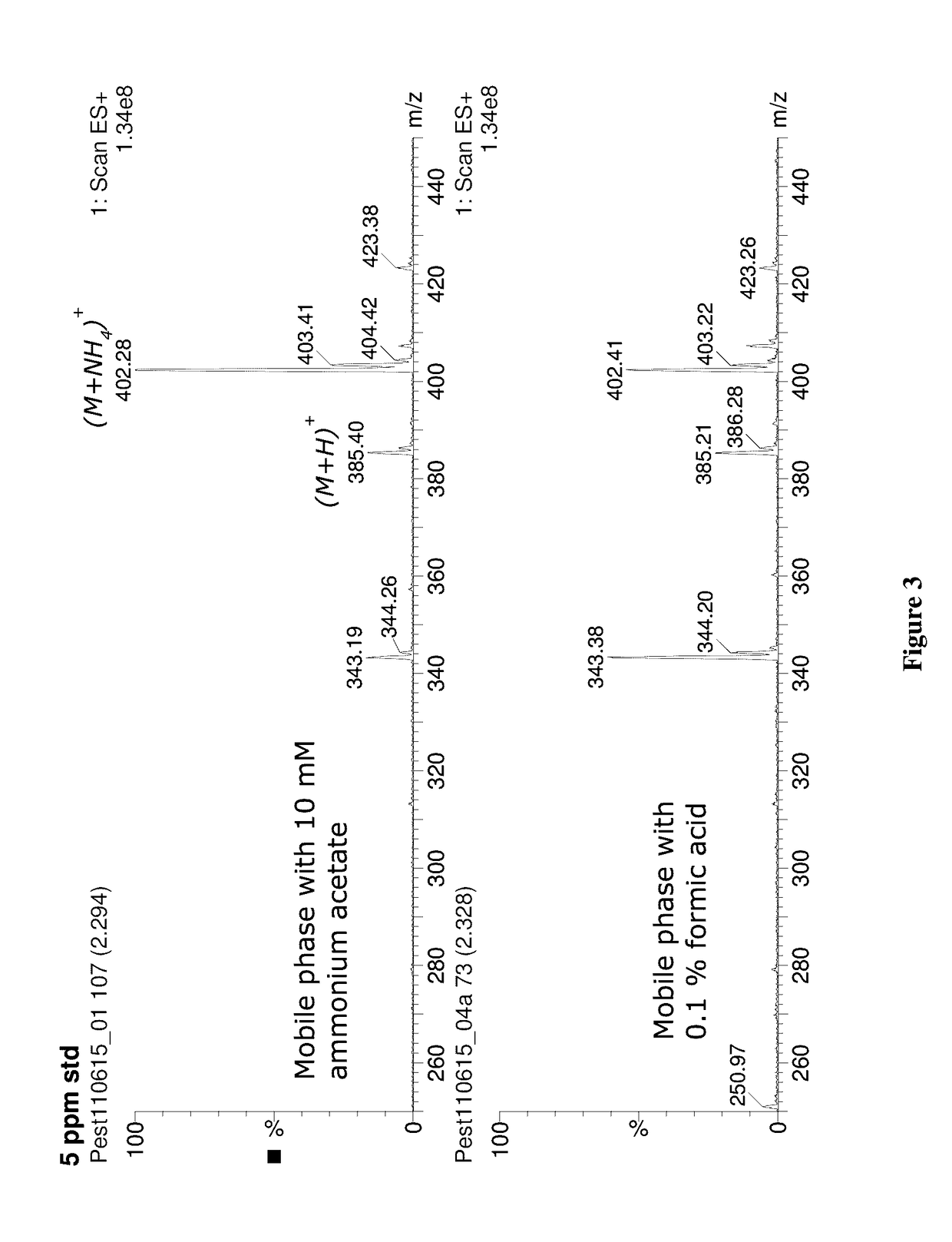Methods for detecting and quantifying non-polar analytes with high sensitivity
a non-polar analyte, high-sensitivity technology, applied in the field of methods for detecting non-polar analytes, can solve the problems of high matrix interference, methods that use quechers, and methods used for analyzing pesticide content,
- Summary
- Abstract
- Description
- Claims
- Application Information
AI Technical Summary
Benefits of technology
Problems solved by technology
Method used
Image
Examples
example 1
Analysis of Acequinocyl in Cannabis
[0050]A procedure (100) for detecting and analyzing acequinocyl in cannabis is shown in FIG. 1. The purpose of Step 1 of the analysis is to obtain an acetonitrile (ACN) extract of cannabis or other dry commodity using a modified Quechers method. First, the cannabis sample was ground or milled to obtain a fine powder (110). A 1 gram portion of this prepared sample was transferred to a 50 mL polypropylene centrifuge tube along with 10 mL of pure water. The sample was vortexed or shaken for 30 seconds and allowed to equilibrate at room temperature for 30 minutes. Subsequently, 10 mL of ACN were added, and the sample was placed on a mechanical shaker for 30 minutes. Subsequently, 1 gram of trisodium citrate dihydrate, 0.5 grams of disodium hydrogen citrate sesquihydrate, 1 gram of sodium chloride and 4 grams of anhydrous magnesium sulfate were added to the sample to induce phase separation between the water and ACN. The sample was shaken vigorously for...
PUM
 Login to View More
Login to View More Abstract
Description
Claims
Application Information
 Login to View More
Login to View More - R&D
- Intellectual Property
- Life Sciences
- Materials
- Tech Scout
- Unparalleled Data Quality
- Higher Quality Content
- 60% Fewer Hallucinations
Browse by: Latest US Patents, China's latest patents, Technical Efficacy Thesaurus, Application Domain, Technology Topic, Popular Technical Reports.
© 2025 PatSnap. All rights reserved.Legal|Privacy policy|Modern Slavery Act Transparency Statement|Sitemap|About US| Contact US: help@patsnap.com



